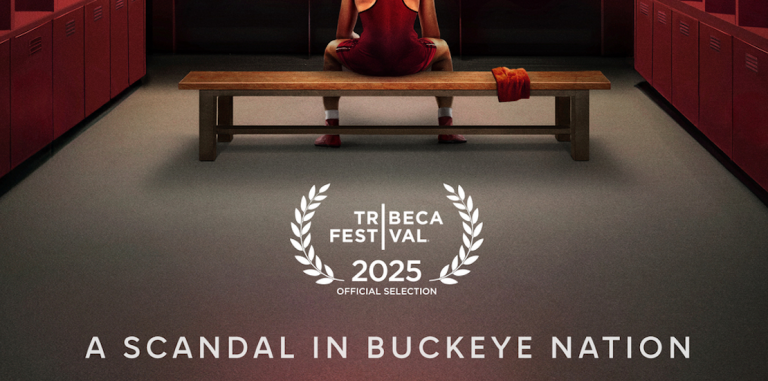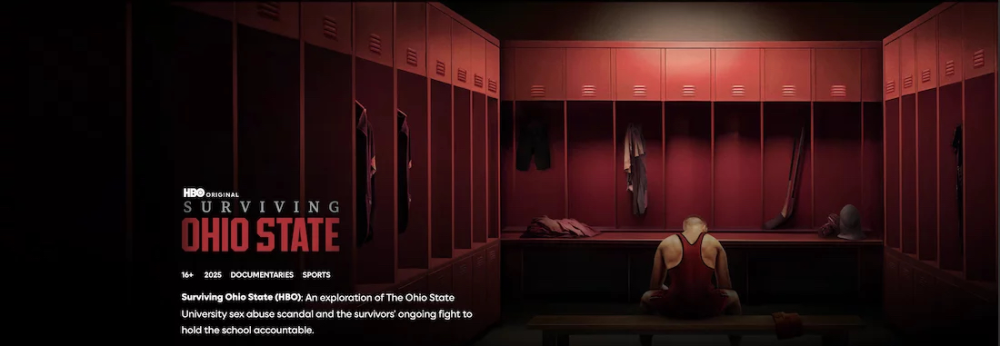
Survivors of Sexual Abuse by O.S.U. Doctor Break Decades of Silence
New York, N.Y. — A harrowing HBO documentary, “Surviving Ohio State,” has brought renewed attention to one of the most extensive sexual abuse scandals in U.S. higher education history.
The film centers on former student athletes who endured abuse by Dr. Richard Strauss, a sports medicine physician who worked at Ohio State University (O.S.U.) from the late 1970s to the late 1990s.
The Guardian’s recent coverage highlights the documentary’s impact as survivors recount their experiences and demand accountability from an institution that failed to protect them.

The Abuse and Its Aftermath
Dr. Strauss is accused of sexually abusing at least 177 male student-athletes over nearly two decades, with estimates suggesting the actual number of victims could be in the thousands.
The abuse occurred under the guise of medical examinations, with Strauss allegedly insisting on unnecessary genital checks, fondling students, and, in some cases, escalating to oral sex and masturbation during appointments.
Survivors have described feeling powerless, confused, and ashamed, with
many keeping their experiences secret for years—even decades—afterward.
The documentary features firsthand accounts from survivors who recall the trauma and betrayal they felt. “Whenever we were unwell, he was our go-to. If we needed medication or suffered an injury, he was the one we approached. Each time, his examination included a genital check, without exception, and he never wore gloves, it was always skin on skin,” one survivor recounted in the film.
Institutional Failure and Cover-Up
A 2019 investigative report by the law firm Perkins Coie revealed that O.S.U. administrators and staff were aware of complaints about Strauss as early as 1979 but failed to act meaningfully.
Athletic directors, trainers, and other university personnel received multiple reports about Strauss’s conduct, yet no significant action was taken until 1996, when he was finally suspended from his duties. Even then, Strauss was allowed to retire with emeritus status and continued to see students at an off-campus clinic until 1998.
One athletic trainer told investigators, “People who overlapped with Strauss for any significant time would have to have their ‘ears plugged, eyes shut, and mouth closed to not realize something was off.’” Despite the persistence and seriousness of the complaints, O.S.U. did not report Strauss to law enforcement, a failure that has drawn widespread condemnation.
Legal Reckoning and Survivor Advocacy
In the wake of the scandal, O.S.U. has faced multiple lawsuits from survivors seeking justice and compensation for the harm they endured. In May 2020, the university agreed to pay $40.9 million to 162 survivors, but additional lawsuits remain pending. Survivors and their advocates have called for more robust protections for students and greater transparency from institutions to prevent future abuse.
“On behalf of the university, we offer our profound regret and sincere apologies to each person who endured Strauss’ abuse,” former O.S.U. President Michael Drake wrote in a statement. “Our institution’s fundamental failure at the time to prevent this abuse was unacceptable—as were the inadequate efforts to thoroughly investigate complaints raised by students and staff members.”
The Documentary’s Impact and Public Response
The HBO documentary has amplified survivors’ voices, prompting broader public conversations about sexual abuse in collegiate athletics and the responsibilities of educational institutions. By sharing their stories, survivors hope to ensure that similar abuse does not happen again and to encourage other victims to come forward.
The film also highlights the challenges survivors faced in seeking justice, including the difficulty of finding information about Strauss and the lack of photographic records kept by the university. Colleen Marshall, a news anchor who investigated the allegations in 2018, noted in the documentary:
“Who was this accused doctor? I struggled to find any information about him. Locating a photograph of Dr. Richard Strauss proved challenging. The university itself lacks substantial photographic records of him. He seems like an enigma, which is troubling and feels almost deliberate.”
Lessons Learned and Ongoing Reforms
Since the scandal came to light, O.S.U. has implemented new safeguards against sexual misconduct, including the creation of an Office of Institutional Equity and enhanced prevention education programs. The university is also covering the cost of counseling for affected individuals and has begun the process of revoking Strauss’s emeritus status.
Survivors have emphasized the importance of speaking out and holding institutions accountable. “These men explained to us that their own children are now college-aged and that they want to help ensure that something ‘like this’ never happened at O.S.U., or at any institution, again,” investigators said in the Perkins Coie report.
This story is based on reporting by The Guardian and other major news outlets, with direct quotes and information from survivors, investigators, and university officials. The HBO documentary, “Surviving Ohio State,” serves as a powerful reminder of the need for transparency, accountability, and robust protections for all members of academic communities.
#OhioStateScandal #SurvivingOhioState #EndCampusAbuse #SupportSurvivor
Tags: Ohio State University, Richard Strauss, sexual abuse, HBO documentary, survivor stories,
institutional accountability, higher education, collegiate athletics, investigative journalism
